Science Stuff for 4th Grade Easy and is Not That Much Money Science Fair Slime
Everyone wants to make slime these days and that's because it's just such a cool activity to try! Did you also know that making slime is awesome science too. If you want your kids to get more out of their slime making experience, try turning it into a science experiment and applying a little bit of science method too. Read on to find out how you can set up science experiments with slime and have a cool science fair project for 4th graders, 5th graders and 6th graders.
SLIME SCIENCE FAIR PROJECT IDEAS FOR KIDS!
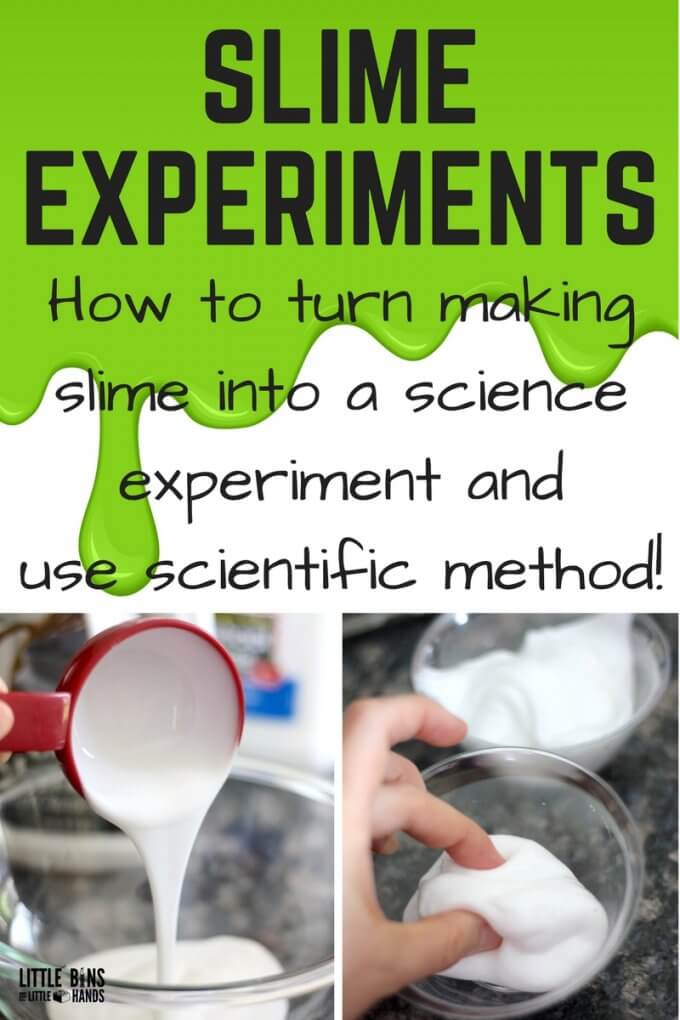
HOW TO MAKE SLIME
Homemade slime is a real treat for kids, and right now it's a super popular activity that also happens to make a great science fair project. We have experimented with our slime recipes over and over again to bring you the best possible activities!
We also have a very cool fizzing slime recipe, watch the video and get the slime recipe here. Two chemistry demonstrations in one!
SLIME SCIENCE PROJECT RESEARCH
Chemistry is all about states of matter including liquids, solids, and gasses. It is all about the way different materials are put together, and how they are made up including atoms and molecules. Chemistry is how materials act under different conditions and/or form new substances. Just like slime!
Slime is an endothermic reaction as opposed to an exothermic reaction. An endothermic reaction absorbs energy (heat) instead of giving off energy (heat). Have you ever noticed how cold your slime gets?
Slime activators (borax, sodium borate, and boric acid) change the position of these molecules in a process called cross-linking!
This is the reaction between the PVA glue and the borate ions in the slime activators. Instead of flowing freely, the molecules become tangled and create a slimy substance. Think wet, freshly cooked spaghetti versus leftover cooked spaghetti!
Grab even more awesome science in our SLIME SCIENCE PROJECT PACK
We always like to include a bit of homemade slime science around here! Slime is an excellent chemistry demonstration and kids love it too! Mixtures, substances, polymers, cross-linking, states of matter, elasticity, and viscosity are just a few of the science concepts that can be explored with homemade slime!
What's slime science all about? The borate ions in the slime activators (sodium borate, borax powder, or boric acid) mix with the PVA (polyvinyl acetate) glue and form this cool stretchy substance. This is called cross-linking!
The glue is a polymer and is made up of long, repeating, and identical strands or molecules. These molecules flow past one another keeping the glue in a liquid state. Until…
You add the borate ions to the mixture, and it then starts to connect these long strands together. They begin to tangle and mix until the substance is less like the liquid you started with and thicker and rubbery like slime! Slime is a polymer.
Picture the difference between wet spaghetti and leftover spaghetti the next day. As the slime forms, the tangled molecule strands are much like the clump of spaghetti!
Is slime a liquid or solid?
We call it a Non-Newtonian fluid because it's a little bit of both! Experiment with making the slime more or less viscous with varying amounts of foam beads. Can you change the density?
Did you know that slime aligns with the Next Generation Science Standards (NGSS)?
It does and you can use slime making to explore states of matter and its interactions. Find out more below…
- NGSS Kindergarten
- NGSS First Grade
- NGSS Second Grade
USING THE SCIENTIFIC METHOD
To take your slime making activity from a science demonstration to a slime science experiment, you will want to apply the scientific method. You can read more about using the scientific method with kids here.
- Figure out a question you want to answer.
- Do some research.
- Gather the supplies.
- Conduct a science experiment.
- Gather data and look at the results.
- Draw your own conclusions and see if you answered your question!
Remember the key to conducting a good science experiment is to only have one variable. For example, water could be a variable. We eliminated the water from our recipe to see if slime needs water as an ingredient. We kept the rest of the recipe exactly the same!
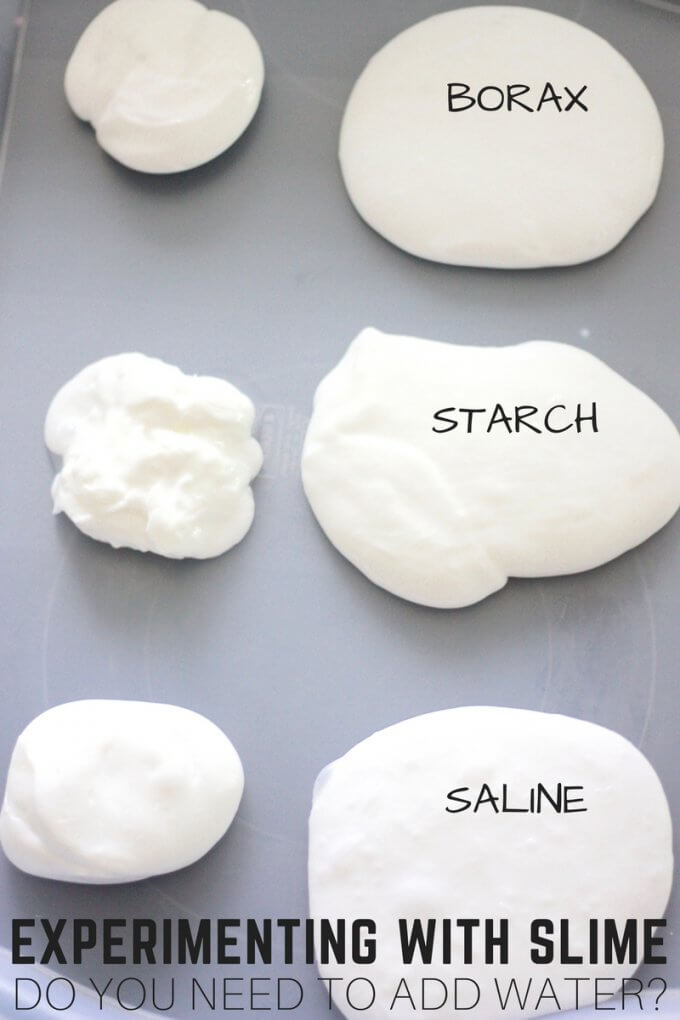
SLIME SCIENCE EXPERIMENTS
More sticky…less sticky…more firm…less firm…thicker…looser…
We put together a list of ideas for science experiments with slime. If you haven't tried out the slime recipes already, I recommend that you learn how to make slime first!
Also check out: Slime Chemistry Activities, click here!
You will find unique recipes for:
- Volcano lava slime
- Magnetic slime (iron oxide powder)
- UV Color-changing slime
- Glow in the dark slime
LOOKING FOR A SLIME SCIENCE PACK?
We now have one ready for you! It's 45 pages of slime fun for kids! Click here.
- Recipes
- Experiments and Activities
- Journal Sheets
- Slimy Definitions
- Slimy Science Information
- And so much more!
Feel like you are juggling between helping a few students and groups that finish at different times?
Want to know what to say when children ask those difficult to explain WHY questions?
NEW! PURCHASE YOUR SLIME SCIENCE GUIDE NOW!
24 pages of AWESOME slime science activities, resources, and printable worksheets for you!!
When it comes to doing science every week, your class will cheer!
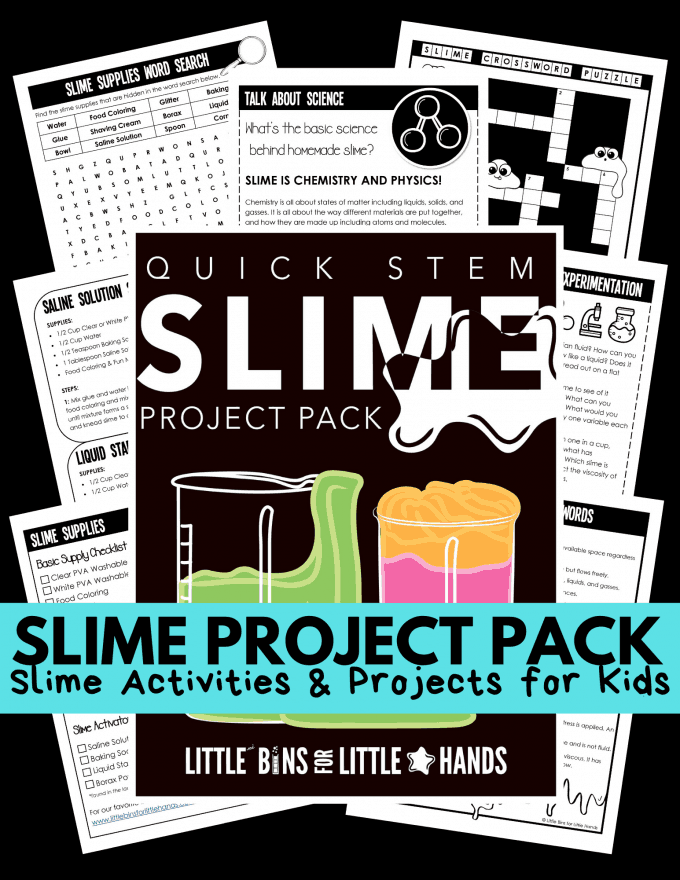
1. DO YOU NEED WATER TO MAKE SLIME?
This was a super fun experiment we tried out and the results were pretty cool! We tested and compared three different slime recipes, but you could do it with just one type of slime and see what happens. Hint… Liquid starch slime without water is no fun! Try this borax slime recipe or saline solution slime instead if you are just going to pick one recipe.
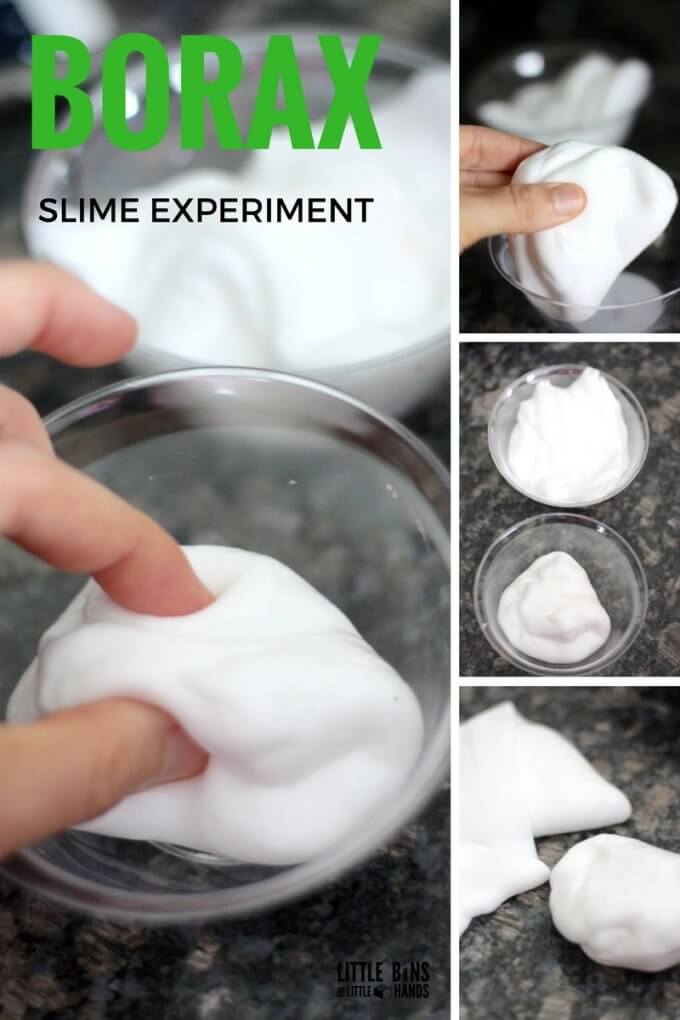
2. ARE ALL BRANDS OF WASHABLE GLUE THE SAME?
This is a great opportunity to test the classic Elmer's Washable School Glue alongside Dollar Store/Staples brand glue or Crayola Glue!
The key to this slime science project is to decide how you will compare the different batches of slime made from each brand of glue. Of course, keep your recipe and method for making your slime the same each time. Think about what makes a good slime… stretch and viscosity or flow and decide how you will measure those characteristics for each slime. Your observations of the "feel" of each slime are valid data as well.
3. WHAT HAPPENS IF YOU CHANGE THE AMOUNT OF GLUE IN THE RECIPE?
We tried out this slime science experiment using our classic liquid starch slime recipe. This is also how we ended up with FLUBBER! Decide how you will vary the amount of glue. For example; you could do one batch with the normal amount of glue, twice the amount of glue, and half the amount of glue.
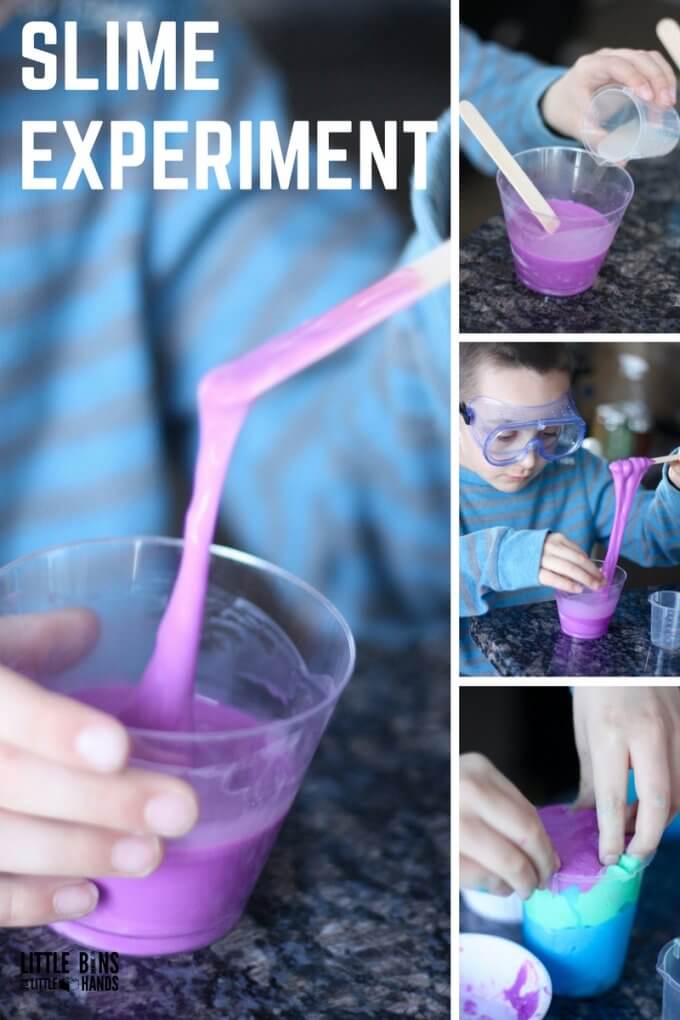
4. WHAT HAPPENS IF YOU CHANGE THE AMOUNT OF BAKING SODA?
Similarly, to changing the amount of glue, investigate what happens to your slime when you change the amount of baking soda added to the saline solution slimeor fluffy slime recipe, Do a batch without baking soda and one with and compare. Baking soda is generally used to firm up this slime recipe.
5. BORAX FREE SLIME SCIENCE EXPERIMENT
What's the best ratio of powder to water for a borax free fiber slime? Use our taste safe fiber slime recipe to test your favorite consistency for gooey slime. We went through several batches to see what worked the best. Make sure to decide ahead of time how you will measure the slime consistency for each batch.
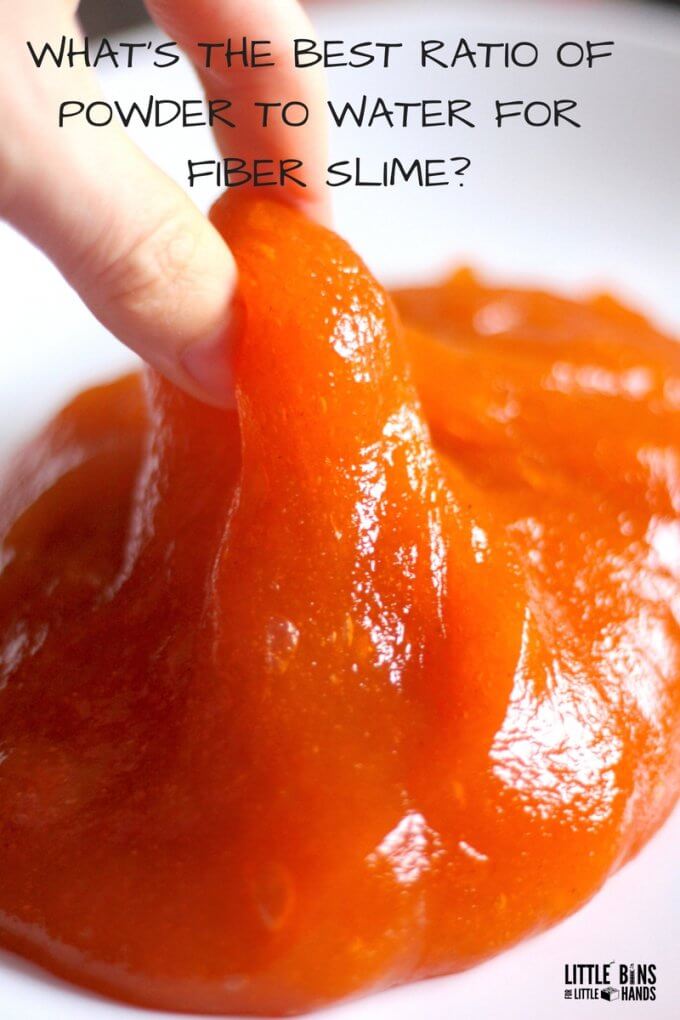
6. WHAT AMOUNT OF FOAM BEADS MAKES THE BEST FLOAM?
What's the best amount of styrofoam beads for homemade floam? This is how we tested our floam and recorded the results as we went along. Or you can vary and then compare the sizes of styrofoam beads too!
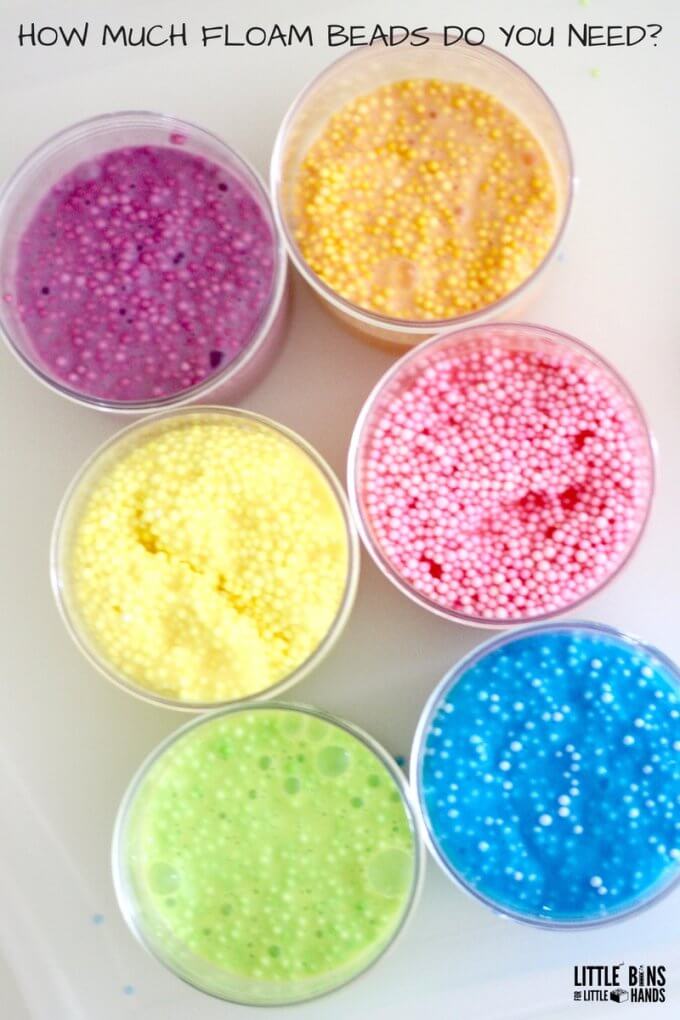
MORE SLIME SCIENCE PROJECTS
What else can you test when it comes to your next slime project?
CLEAR GLUE VS. WHITE GLUE
Which glue makes the better slime? Use the same recipe for both and compare/contrast the similarities/differences. Does one recipe work better for either clear or white glue?
DOES COLOR AFFECT THE CONSISTENCY OF SLIME?
Do different colors have an effect on the consistency of the slime. You can use the standard box of colors, red, blue, yellow, and green to see! Make sure to use all the colors with one batch of slime!
WHAT HAPPENS IF YOU FREEZE SLIME?
Is slime affected by temperature? What happens if you freeze your slime?
OR COME UP WITH YOUR OWN SLIME SCIENCE EXPERIMENT!
Try out your own slime science experiment. However, we do not recommend substituting slime activators without knowing what the chemical reaction will be first.
You could…
- explore viscosity
- discover new textures
- learn about non-Newtonian fluids and shear thickening
- explore states of matter: liquids, solids, and gasses
- learn about mixtures and substances and physical properties
No more having to print out a WHOLE blog post for just one recipe!
Get our basic slime recipes in an easy to print format so you can knock out the activities!
—>>> FREE SLIME RECIPE CARDS
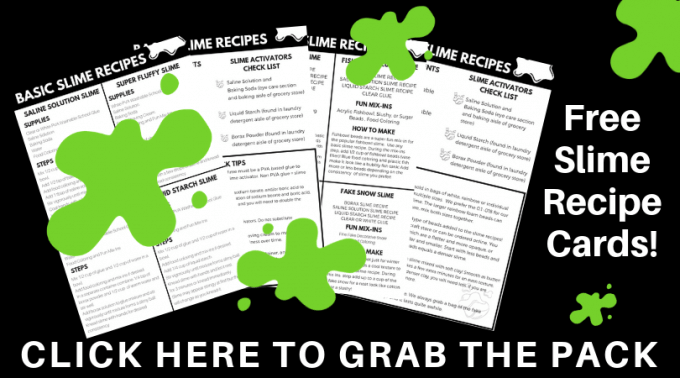
Source: https://littlebinsforlittlehands.com/how-to-set-up-science-experiments-with-slime/
0 Response to "Science Stuff for 4th Grade Easy and is Not That Much Money Science Fair Slime"
Post a Comment